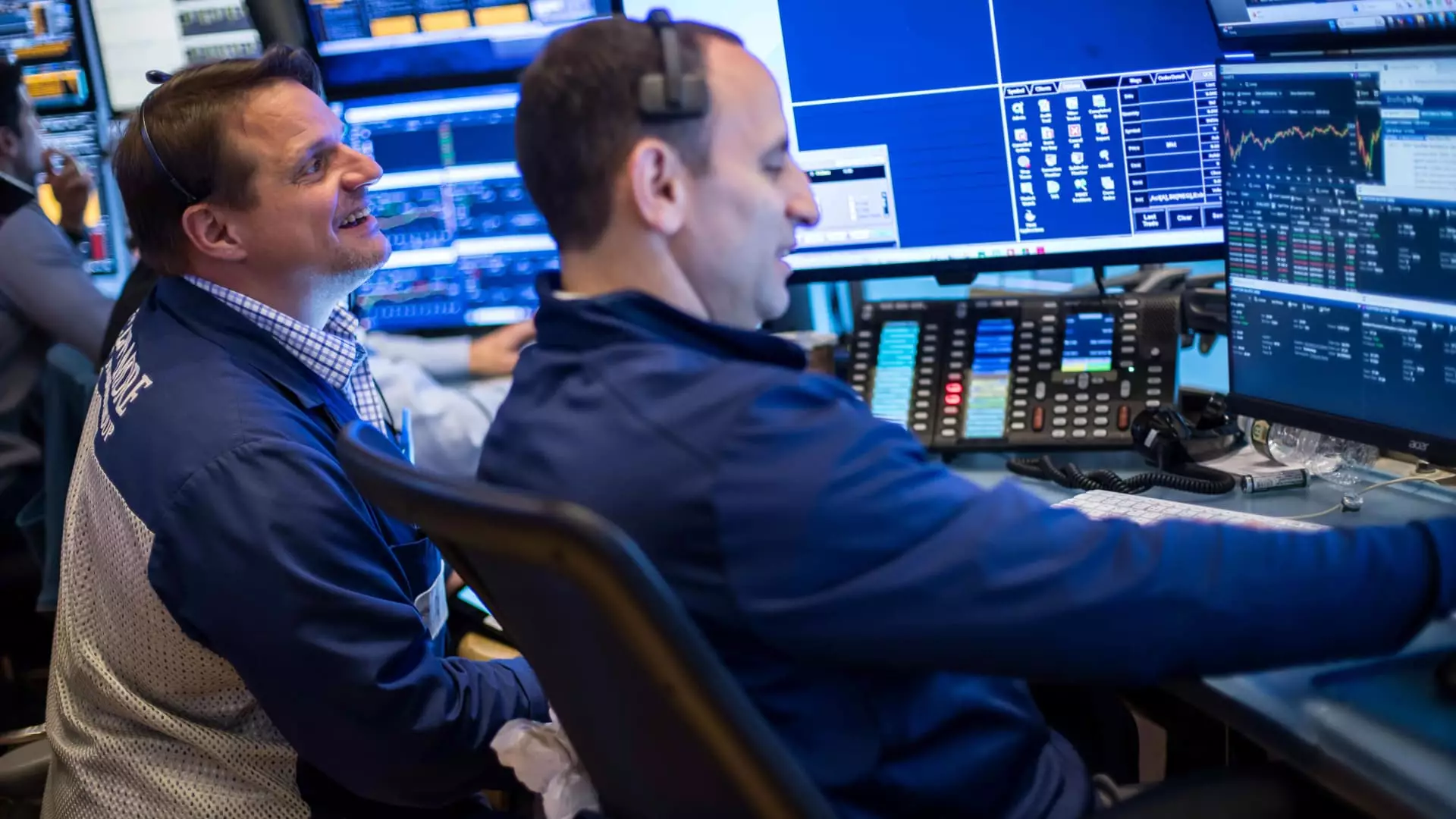In what can only be described as a refreshing breeze for investors, recent nonfarm payroll data revealed that the U.S. economy is showing unexpected resilience. With a reported gain of 139,000 jobs in May, exceeding forecasts of 125,000, stocks rallied enthusiastically. The Dow Jones Industrial Average, a staple indicator of economic health, surged by 443.13 points, or 1.05%, closing at an impressive 42,762.87. The energy was palpable as the index briefly topped 600 points during the session’s peak. Meanwhile, the S&P 500 and Nasdaq Composite followed suit, recording gains of 1.03% and 1.20%, respectively.
This enthusiasm, however, must be viewed through a critical lens. Given the fragile nature of our current economic recovery, this surge may be more indicative of a temporary reprieve rather than a sustained revival. The underlying factors driving this market bump warrant scrutiny. Analysts point to the significant rebound in companies like Tesla, which soared more than 3% despite an earlier plunge tied to ongoing tumultuous exchanges between its CEO, Elon Musk, and former President Donald Trump. The volatility of such stocks exemplifies the uncertainties permeating the market.
Balancing Enthusiasm with Caution
Despite the optimistic job numbers, we cannot ignore the storm clouds gathering on the horizon. April’s employment figures were revised down to 147,000, suggesting an elusive yet palpable deceleration in the labor market’s momentum. The unemployment rate, stable at 4.2%, raises more questions than answers, particularly about the quality of the jobs created. Are these positions sustainable, or are they merely temporary or part-time roles?
Further complicating the economic landscape are the brewing tensions related to tariffs and trade negotiations. Data released earlier this week illustrated a concerning narrative of a potential economic slowdown. Jobless claims exceeded expectations, and private sector job growth fell well short of forecasts, with only 37,000 jobs added according to ADP. Coupled with a reported decline in the U.S. services sector, one must wonder how much longer this bullish behavior can be sustained.
Anthony Saglimbene, chief market strategist at Ameriprise, captured the dilemma perfectly, suggesting we’re caught in a paradox where the labor market appears solid yet is overshadowed by concerns surrounding inflation and tariff ramifications. As economic uncertainty lingers, we face a predicament: is the market merely caricaturing optimism, or is it embodying true resilience?
Tariffs and Economic Repercussions
The specter of tariffs looms large, casting uncertainty over business operations and consumer spending patterns. Every tariff negotiation influences not just industries directly affected but also sets off a domino effect impacting the broader economy. As Saglimbene suggested, we may be on the precipice of feeling the true impact of these tariffs, with effects hanging in limbo until they materialize in the statistics.
Trump’s recent hints of progress in trade discussions illuminate the fervent desire for stability within financial markets. The prospect of talks between the U.S. and China next week in London adds a layer of complexity—will these discussions bring about meaningful changes or merely serve as another temporary bandage? The market seems to oscillate between hope and skepticism, unable to commit fully to either narrative.
The Market’s Mixed Signals
Even amid a backdrop of fluctuating optimism and caution, one cannot overlook the weekly gains that were realized: the S&P 500 rose 1.5%, the Dow advanced by 1.2%, and the Nasdaq jumped by 2.2%. These statistics speak to an undeniable resilience among investors, creating a precarious balance between celebration and foreboding.
Yet, one is compelled to question: what lies beneath the surface of these numbers? Are they reflective of an intrinsic belief in robust consumer spending and a recovering economy, or are they an echo of a temporary market rally? We stand at a crossroads, where bullish sentiments must contend with the nagging qualities of a more nuanced economic reality.
In closing, while we can marvel at the remarkable rise in stock prices and glean confidence from job data, let us be vigilant. The factors driving this momentum warrant a critical examination. As we approach seismic discussions on tariffs and inflation impacts, whether the market can maintain its buoyancy remains an open question. Holding steadfast in the belief of progress is important, yet tempered awareness of economic fragility is equally vital for sustained growth and prosperity.

Leave a Reply